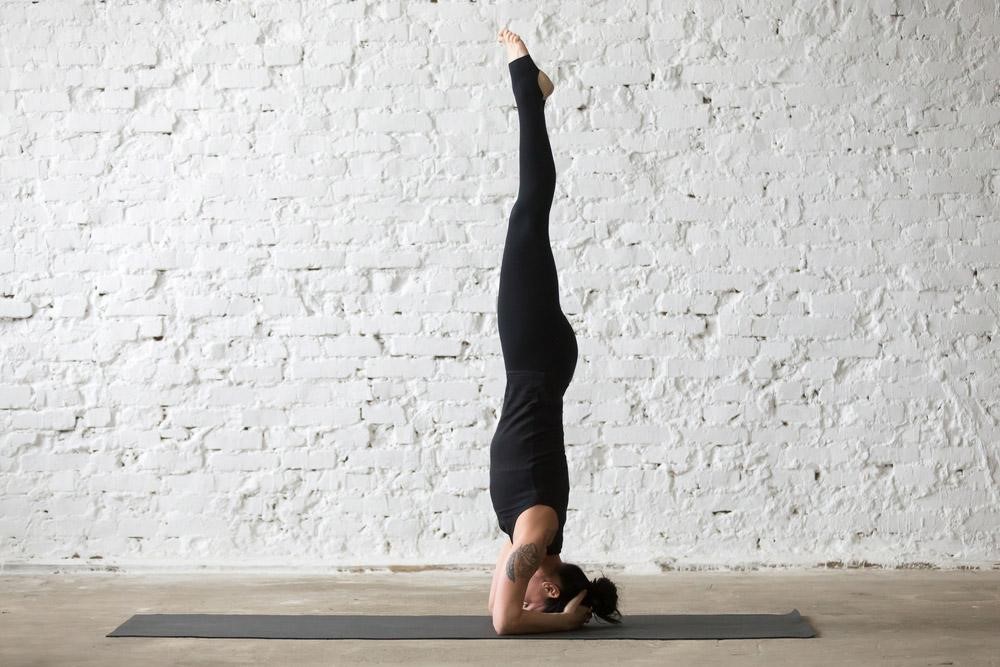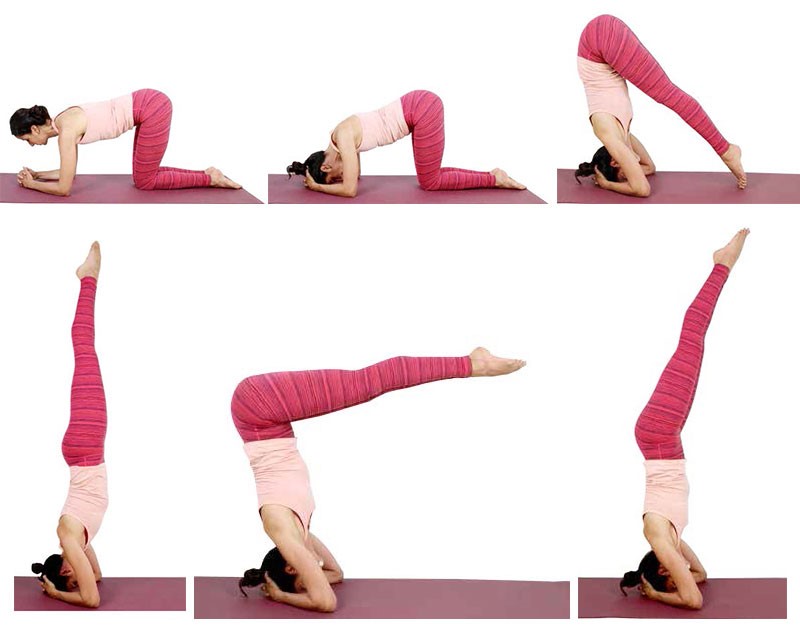WHAT IS SIRSASANA HEADSTAND POSE?
Asanas Sirsana – This posture optimizes the flow of nutrients in your head and scalp.
This pose is considered the greatest of all asanas due to its many health benefits.
It revitalizes the body and mind and relieves anxiety and other psychological disturbances.

yoga-tips
Asanas Sirsana
With this headstand pose, deep exhalation is possible due to the weight of the abdominal organs on the diaphragm, which allows for a larger amount of carbon dioxide to be removed from the lungs.
It also helps with many nervous and glandular disorders, especially those of the reproductive system.
It reverses the effect of gravity on the body, alleviating the flow of blood to the legs and visceral region-aiding regeneration.

Asanas Sirsana
BENEFITS OF SIRSASANA HEADSTAND POSE
- Stimulates pituitary and pineal glands, which aid growth and the production of sex hormones
- Strengthens the spine, neck, shoulders, and arms
- Tones the legs and abdominals
- Relieves a build-up of fluid in the legs and feet
- Allows a healthy, pure blood flow to the brain cells
- Stimulates the nervous system
- Aids in the treatment of headaches, anxiety, asthma, sinusitis, fever, depression, diabetes, insomnia, and symptoms of menopause
- Increase mental awareness and clarity
- Calms and soothes the mind
- May reverse the effect of lethargy, sleep loss, and memory loss
- Stimulates and strengthens the lungs, facilitating healthy breathing
- Improves posture and digestion
- It helps overcome problems of the liver, kidneys, stomach, intestines, and reproductive organs by reversing the pull of gravity
HOW TO DO SIRSASANA?
Starting on your knees, lean forward and place the forearms on the ground.
The elbows should be in front of the knees at shoulder-width distance (measure this by touching the elbows with the fingers and keeping the elbows in that spot).
- The fingers should be interlocked at their webs, the lower little finger should be tucked in front of the other little finger so that the outer bases of the hands are flat. The thumbs can be kissing or placed one on top of the other.
- Place the crown of the head on the floor, between the hands. It should not push into the fingers but instead, rest gently against the base of the hands. The support should be firm and not break or roll backward when pressure is applied.
- Lift the knees and buttocks off the floor, straighten the legs and start to walk the toes towards the head. The hips will gradually shift back into a vertical position.
- Bend the knees slightly, and press them against the abdomen and chest, transferring the body weight slowly from the toes onto the head and arms. The majority of the weight should be on the arms not on the head.
- Slowly raise one foot at a time carefully finding balance.
- Extend the legs and balance on the head and arms. The whole body should be in one straight line with the feet relaxed.

poses-Sirsana
PRECAUTIONS
- Remember to keep breathing.
- The breath should become more and more subtle as the body adjusts to this pose.
- Start by holding it for 10-30 seconds, gradually increasing this time as you go feeling more comfortable.
- 3-5 minutes is sufficient for the health benefits of this pose.
HEADSTAND YOGA TIPS:
Breathing and relaxation are important to receive the full benefits of the yoga headstand.
You may want to practice a relaxing Mudra to prepare for the Salamba Sirasana.
Preparatory Poses for Headstand
- Adho Mukha Svanasana / Downward Facing Dog Pose
- Salabhasana / Locust Pose
- Ustrasana / Camel Pose
- Indudalasana / Crescent Pose
- Uttanasana / Forward Fold
- Prasarita Padottanasana / Wide-Leg Forward Fold
- Paschimottanasana / Seated Forward Fold
- Virasana / Hero’s Pose
- Hanumanasana / Full Splits

Asanas Sirsana
Follow-up Poses
- Balasana / Child’s Pose
- Adho Mukha Svanasana / Downward Dog Pose
- Savasana / Corpse Pose
Precautions & Contraindications (Asanas Sirsana)
The pose should be avoided by people with:
- high blood pressure
- heart palpitations
- glaucoma and other eye problems
- hiatus hernia
- cervical spine instability
- Consult your doctor before practicing Sirsasana if:
- You have back or neck injuries.
- You have a heart condition.
Proceed with caution if you get headaches regularly.
Sirsasana can help reduce headaches but it can also make them worse.
Proceed with caution if you are pregnant.
If you do regular practice of the headstand you can continue this pose as late into your pregnancy as you feel comfortable.
However, it is not recommended for pregnant women who are new to the pose.
